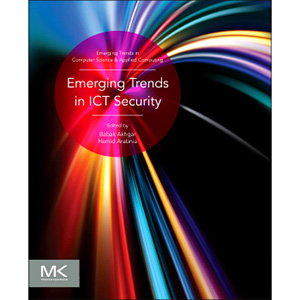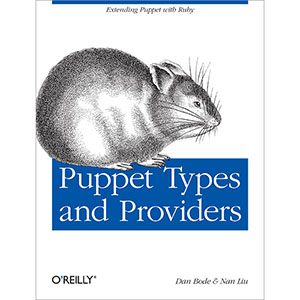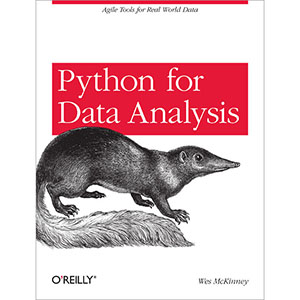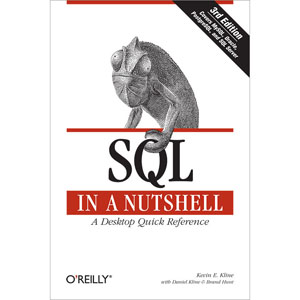Emerging Trends in ICT Security

Emerging Trends in ICT Security, an edited volume, discusses the foundations and theoretical aspects of ICT security; covers trends, analytics, assessments and frameworks necessary for performance analysis and evaluation; and gives you the state-of-the-art knowledge needed for successful deployment of security solutions in many environments. Application scenarios provide you with an insider’s look at security solutions deployed in real-life scenarios, including but limited to smart devices, biometrics, social media, big data security, and crowd sourcing.
- Provides a multidisciplinary approach to security with coverage of communication systems, information mining, policy making, and management infrastructures
- Discusses deployment of numerous security solutions, including, cyber defense techniques and defense against malicious code and mobile attacks
- Addresses application of security solutions in real-life scenarios in several environments, such as social media, big data and crowd sourcing
Table of Contents
PART 1: INFORMATION AND SYSTEMS SECURITY
SECTION 1: Theory/Reviews of the field
Chapter 1. System Security Engineering for Information Systems
Chapter 2. Metrics and Indicators as Key Organizational Assets for ICT Security Assessment
Chapter 3. A Fresh Look at Semantic Natural Language Information Assurance and Security
SECTION 2: Methods
Chapter 4. An Approach to Facilitate Security Assurance for Information Sharing and Exchange in Big-Data Applications
Chapter 5. Gamification of Information Security Awareness Training
Chapter 6. A Conceptual Framework for Information Security Awareness, Assessment, and Training
Chapter 7. Security Projects for Systems and Networking Professionals
SECTION 3: Case study
Chapter 8. Assessing the Role of Governments in Securing E-Business
PART 2: NETWORK AND INFRASTRUCTURE SECURITY
SECTION 4: Theory Reviews of the field
Chapter 9. A Survey of Quantum Key Distribution (QKD) Technologies
Chapter 10. Advances in Self-Security of Agent-Based Intrusion Detection Systems
Chapter 11. Secure Communication in Fiber-Optic Networks
SECTION 5: Methods
Chapter 12. Advanced Security Network Metrics
Chapter 13. Designing Trustworthy Software Systems Using the NFR Approach
Chapter 14. Analyzing the Ergodic Secrecy Rates of Cooperative Amplify-and-Forward Relay Networks over Generalized Fading Channels
Chapter 15. Algebraic Approaches to a Network-Type Private Information Retrieval
Chapter 16. Using Event Reasoning for Trajectory Tracking
Chapter 17. Resource-Efficient Multi-Source Authentication Utilizing Split-Join One-Way Key Chain
Chapter 18. Real-time Network Intrusion Detection Using Hadoop-Based Bayesian Classifier
Chapter 19. Optimum Countermeasure Portfolio Selection
Chapter 20. CSRF and Big Data
Chapter 21. Security through Emulation-Based Processor Diversification
Chapter 22. On the Use of Unsupervised Techniques for Fraud Detection in VoIP Networks
PART 3: MOBILE AND CLOUD COMPUTING
SECTION 6: Reviews of the field
Chapter 23. Emerging Security Challenges in Cloud Computing, from Infrastructure-Based Security to Proposed Provisioned Cloud Infrastructure
SECTION 7: Methods
Chapter 24. Detection of Intent-Based Vulnerabilities in Android Applications
PART 4: CYBER CRIME AND CYBER TERRORISM
SECTION 8: Theory
Chapter 25. A Quick Perspective on the Current State in Cybersecurity
Chapter 26. A Paradigm Shift in Cyberspace Security
SECTION 9: Methods
Chapter 27. Counter Cyber Attacks By Semantic Networks
Chapter 28. Man-in-the-Browser Attacks in Modern Web Browsers
Chapter 29. Improving Security in Web Sessions
Chapter 30. Leveraging Semantic Web Technologies for Access Control
Chapter 31. Cyber Security Education
SECTION 10: Case study
Chapter 32. Surveillance without Borders
PART 5: FOCUS TOPICS: FROM ONLINE RADICALISATION TO ONLINE FINANCIAL CRIME
SECTION 11: Theory
Chapter 33. A Framework for the Investigation and Modeling of Online Radicalization and the Identification of Radicalized Individuals
Chapter 34. Preventing Terrorism Together
SECTION 12: Methods
Chapter 35. Investigating Radicalized Individual Profiles through Fuzzy Cognitive Maps
Chapter 36. Financial Security against Money Laundering
Chapter 37. Intelligent Banking XML Encryption Using Effective Fuzzy Logic
Book Details
- Hardcover: 650 pages
- Publisher: Morgan Kaufmann; 1 edition (November 2013)
- Language: English
- ISBN-10: 0124114741
- ISBN-13: 978-0124114746














